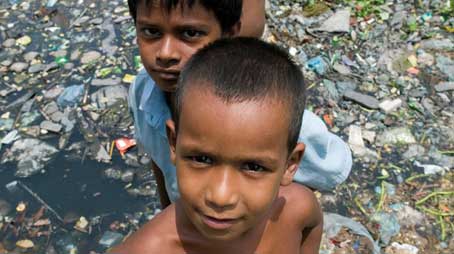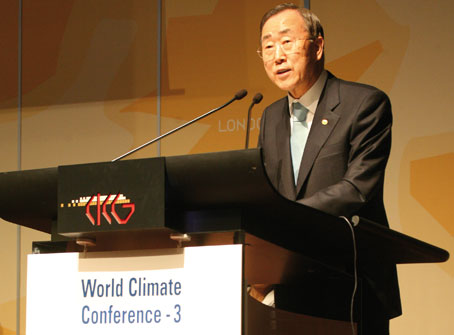| SEARCH |
-

Nov 17, 2015
Reflections on a three-decade legacy
The International Geosphere-Biosphere Programme (IGBP) will come to a close at t...
-
Nov 17, 2015
Use of and access to content on this website
Text and images produced by IGBP in house are free to use with appropriate credi...
-
Nov 12, 2015
Bella Gaia performance and panel discussion to mark IGBP's closure
A musical performance by Bella Gaia will celebrate the achievements and legacy o...
-

Towards Future Earth:
evolution or revolution?
During its three decades of existence, the International Geosphere-Biosphere Pro...
-
A personal note on IGBP and the social sciences
Humans are an integral component of the Earth system as conceptualised by IGBP. João Morais recalls key milestones in IGBP’s engagement with the social sciences and offers some words of advice for Future Earth.
-
IGBP and Earth observation:
a co-evolution
The iconic images of Earth beamed back by the earliest spacecraft helped to galvanise interest in our planet’s environment. The subsequent evolution and development of satellites for Earth observation has been intricately linked with that of IGBP and other global-change research programmes, write Jack Kaye and Cat Downy .
-
Deltas at risk
Around 500 million people worldwide live on deltas, but many of the world's deltas are sinking due ...
-
Climate change: the state of the science
A new data visualization released on the first day of the plenary negotiations at the UNFCCC’s clima...
-
Climate Change:
the State of the Science
Videos now online from the Stockholm public forum to mark the launch of the IPCC's climate report, 2...

Climate services for all?
At the Third World Climate Conference in Geneva he rattled off a stream of statistics that combine to make Bangladesh arguably the country most vulnerable to rapid environmental change. With a population of 150 million, Bangladesh has the highest population density in the world. On average, 1000 people cram each square kilometre.
The burgeoning population live on the world’s largest delta. This low-lying land, squeezed between the Himalayas to the north and the Bay of Bengal to the south, makes severe hardship, largely caused by monsoon floods and typhoons, inevitable. Up to one third of land is under water for part of the year. The name Bangladesh – meaning Country of Bengal – is apt.
“Bangladesh is a country of disaster and natural calamity,” Mahmud told the 2500-strong conference made up of the UN, scientists, government departments, funding bodies and aid agencies.
“With rising sea levels, saltwater intrusion in low-lying areas could cause a 40 percent reduction in grain production. Climate change is exacerbating the risk of disaster.”
Mahmud was not there to complain about his country’s lot. Bangladesh is working hard to adapt, and climate research is helping. The minister discussed an effective typhoon warning system now in place, based on 116 community radio stations. He emphasised the need to work across scales to develop effective adaptation measures. Research centred on regional and global scales needs to be interpreted at the local scale of towns and cities if it is to be of any use. This point was to come up repeatedly throughout the conference, the third of its kind in 30 years.
The first World Climate Conference, in 1979, led to the World Climate Programme (which includes the World Climate Research Programme), and later to the Nobel prize-winning Intergovernmental Panel on Climate Change (IPCC) and IGBP. The second, in 1990, called on governments to establish a climate convention, adding momentum to international efforts that resulted in the UN Framework Convention on Climate Change in 1992. It also led to the establishment of the Global Climate Observing System.
But, while the IPCC has helped translate the work of WCRP, IGBP and many other research programmes into user-friendly assessments primarily for national and international policymakers, there has been significantly less progress in translating the research into products useful to water management experts, farmers, the health sector, the insurance industry, aid agencies and the like, particularly on shorter timescales and at local and regional levels.


UN Secretary-General Ban Ki-moon.


The third World Climate Conference, organised by the UN’s World Meteorological Organization, aimed to rectify this deficiency. The conference was called to create what is being called a “global framework for climate services”. Secretary-General Ban Ki-moon, who had just returned from the high Arctic where he had met polar researchers on the Svalbard archipelago, was in no mood for procrastination. “I have seen the sober reality of climate change with my own eyes,” he said. “Our foot is stuck on the accelerator and we are heading for an abyss.” Delegates from over 150 nations promptly agreed the proposal.
The new climate service will provide information and predictions on the time and space scales needed by society. Major advances in the science over the last 30 years means reliable seasonal and decadal climate predictions are no longer a pipe dream but a realistic proposition. This will allow, for the first time, key sectors to adapt and prepare vulnerable areas.
It looks likely the new framework will have four components: observation and modelling; research and prediction; a climate services information system taking data and results from the first two; and finally, a front end to translate and interpret the information for the various sectors – governments, agriculture, water, health, energy, conservation, aid agencies. This will be the “User Interface Programme”.
The third part, the climate services information system, will focus on what all the various sectors need and feed this information to the research programmes. The two-way flow of information allows it then to take data from the programmes and interpret it for particular industries or locations.
The first component – observation and modelling – is well established, according to Deliang Chen, executive director of the International Council for Science. But it is recognised they need bolstering. Indeed, one of the five key recommendations coming from the conference was stronger links between WCRP, IGBP and the other global-change programmes. There is a need for a full Earth-systems approach with more integration between international programmes. Scientists also called for greater access to the world’s most powerful computers.
The architects of the new framework seek several outcomes. First, strengthened local, national, regional and global observational networks and information-management systems for climate.
Second, better climate modelling and prediction capabilities, achieved by focusing international research on seasonal-to-decadal timescales. Third, better provision for climate services nationally. This inevitably means many more discussions between researchers and the organisations that will use the service.
But this is not without its challenges. During the conference aid agencies and other sectors brought home the point again and again: the research community often shoves out masses of data onto loading docks and expects others to cart it off and make sense of it.
Cross roads
Madleen Helmer from the International Federation of Red Cross and Red Crescent Societies summed up her frustration. She explained how her team spent weeks poring over satellite data before abandoning the work unable to find useful data.
“We need to go to where the knowledge is. And where this knowledge is, is not a traditional partner for the Red Cross and Red Crescent.”
Walter Baethgen from the International Research Institute for Climate and Society reiterated the point. “If I break my leg playing football and need an X-ray, I don’t want to be told my bone reflects 40 percent of the X-rays and absorbs 60 percent and that an anomaly has been noticed.”
Helmer says seasonal forecasts, though, are what they need desperately. Plus a way of getting information to people who may live in a place that sees one bus a day.
“We want a permanent dialogue between the knowledge centres and those that can use that knowledge.” The new service hopes to provide such a dialogue.
Trading in risk
Ulrich Hess from the UN’s World Food Programme described new climate-related initiatives for farmers. He claimed the climate science community is “sitting on a treasure that will allow the global trading of risk”.
New schemes designed to transfer the risk from poor farmers to global financial markets are proving viable. A pilot scheme, set up in India in 2003, is spreading throughout the world. So far, more than two million policies have been sold in India alone.
“We need good historical data, good real-time data and weather stations close to farmers.”
The insurance industry particularly likes such schemes because they remove “moral hazard”, its term for fraud.
“If there is a third party – a reliable weather station, for example – we have a guarantee that a claim is genuine.”
The fact that the conference brought so many sectors together with the research community made it a valuable step forward in genuine engagement. The same points were often made day after day – emphasising the need for more dialogue.
US backing
The head of the US delegation, Dr Jane Lubchenko, said, “Imagine farmers able to determine what to plant and where, based on drought forecasts three to five years out. Imagine city planners and water resource managers able to ensure water for drinking, energy production, agriculture and many other uses. Imagine public health officials being ready for, or even able to avoid, outbreaks of malaria.”
Lubchenko, who also heads the National Oceanic and Atmospheric Administration, added, “The concept of climate services is an idea that has been gestating for some time. Today marks the day that climate services was born.”
For Mahmud and 150 million Bangladeshis the news comes not a moment too soon.
IGBP closed at the end of 2015. This website is no longer updated.
-

Global Change Magazine No. 84
This final issue of the magazine takes stock of IGBP’s scientific and institutional accomplishments as well as its contributions to policy and capacity building. It features interviews of several past...
-

Global Change Magazine No. 83
This issue features a special section on carbon. You can read about peak greenhouse-gas emissions in China, the mitigation of black carbon emissions and the effect of the 2010-2011 La Niña event on gl...
-
INTERGOVERNMENTAL PANEL ON CLIMATE CHANGE:
How green is my future?
UN panel foresees big growth in renewable energy, but policies will dictate just how big.
-
UK:
'The Anthropocene: a new epoch of geological time?'
Royal Society, Philosphical Transactions A




















